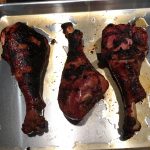T minus seven days until Thanksgiving! I’m making my lists, shopping on Monday, then it all starts Tuesday night. Looking forward to an amazing week of food, family, and fun! Check out my Thanksgiving page and all Thanksgiving recipes here! Happy Thanksgiving to all!
Author: Mike
Celebrating Astronauts and Teaching Excellence
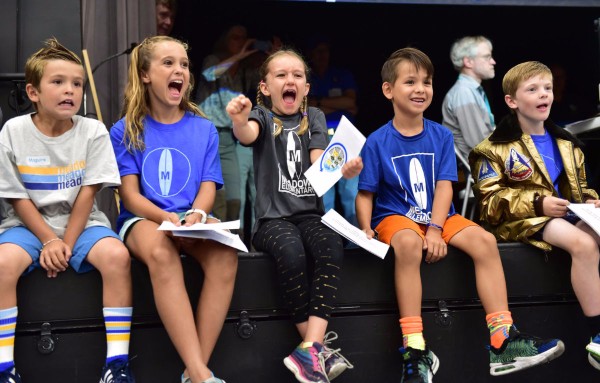
When the last transmission for the International Space Station ended, the crowd in the middle school auditorium cheered wildly. The applause went on for over three minutes – more than 500 people swept up in the tremendous emotion of the moment. There were students, parents, and educators in the room, and every one of them was moved. The adults, understanding the magnitude, were using words like “spine-tingling” and “chills,” and looking around I could see that almost all of them (including me!) had tears of joy in their eyes. It was one of the most powerful educational events I have ever experienced in my 30+ years of public education. It was perfect, and it was symbolic of so many things we do right here in MBUSD.

It all started when one of our five Elementary Science Specialists, Ms. Joanne Michael, applied to the Amateur Radio on the International Space Station program to win a slot for ten minutes of ham radio time with an astronaut on the International Space Station (ISS) as it passed in range of Manhattan Beach. MBEF, Northrup Grumman, and her local radio club all supported her in the application process. She got the word in December of 2016 that she had been selected, then started doing the work to make it happen. She found fellow ham radio operators who would volunteer their time. She selected students of all grade levels to ask the questions, and prepared them to ask their questions in a strong voice using radio communication techniques. In order to communicate with someone in outer space, she figured out how to get an antenna mounted to the top of the MBMS auditorium. She took care of all of that, and the zillions of other logistics that all needed to happen just right to make the event work.
Early in the morning of the planned conversation, Ms. Michael went over to our middle school auditorium, which was large enough to accommodate all of the Meadows Elementary School students, many of their parents, and other guests anxious for this experience. She worked with her fellow ham radio operators, making sure the equipment and back up equipment had the best chance of working. There was so much that could go wrong, and there was just a single ten-minute window while the space station, travelling at 17,500 miles per hour, would be in range of her radio signal. Two of the last four schools had not been successful in reaching the ISS. Astronauts have interruptions sometimes! Technology has glitches sometimes. So much could go wrong. But not on this day.
Four hundred Meadows Elementary students walked to MBMS (no small feat in itself!) and gathered in the auditorium with their parents and other educators. Ms. Michael wore her astronaut suit that day. Of course she did! She made sure the 500 people in the audience knew to be perfectly still and quiet during the 10-minute talk. She made sure everyone knew this whole experiment just might not work, but that failure is how people learn. She reminded them that instead of clapping or cheering, they should give the sign language sign for applause or hooray, by raising their hands in the air and shaking them. (We have several deaf and hard of hearing students in MBUSD). She showed them the big screen with a red dot that moved over China, then Japan, then the Pacific. The dot was the ISS, and the circle around the dot showed when we would be in range for a conversation.
As the right edge of that circle hit southern California, she asked everyone to be quiet, and the ham operator started talking over the intercom, “NAISS, NAISS this is Kilo Mike Six Bravo Whiskey Bravo Come in.” Silence. He said it again, “NAISS, NAISS this Kilo Mike Six Bravo Whiskey Bravo Come in.” Silence. Four more times he called, “NAISS, NAISS this Kilo Mike Six Bravo Whiskey Bravo Come in.” Then, after the seventh call, a voice responded.
“Kilo Mike Six Bravo Whiskey Bravo this is Paolo Nespoli on the International Space Station.”
There were muffled noises of excitement in the audience, and as I turned to the audience, all hands were in the air waving vigorously. The silent applause was deafening and joyful. We were communicating with an astronaut in outer space! That’s when my eyes first starting misting up. It was such a moment, and every person in the room was completely engaged and would not have wanted to be anywhere else in the world.
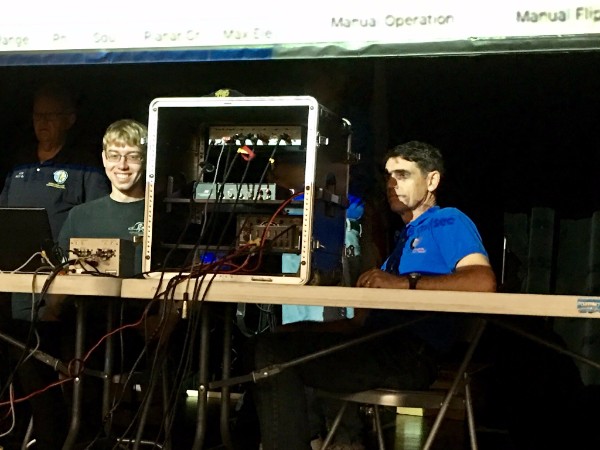
The ham operator turned it over to Ms. Michael, who greeted the astronaut, then immediately let the students take the stage and start asking their questions. Here were some of the questions:
- How do you get picked to be an astronaut? Over.
- How do you eat without your food flying away? Over.
- How long did it take you to get to the ISS? Over.
- How do you take a shower in space? Over.
- Does anyone ever get sick in space? Over.
- What inspired you to be an astronaut? Over.
- Can you see the hurricanes and the wildfires from space? Over.
Astronaut Paolo Nespoli called students by name. He answered their questions efficiently, but he filled his answers with interesting examples and stories. He made it personal, and you could tell that he loved this part of his job. The audience was perfect during the entire time. The sound quality was very, very good, but we were all watching the screen showing the ISS moving over Los Angeles, and then going in a southeast direction. It would not be long until it went out of range.
As I was witnessing the last few minutes, I was overcome thinking about the power of great teaching. This entire experience was happening because of one teacher’s efforts. Ms. Michael’s passion for science and for teaching science was behind everything we were all experiencing. She had invested hundreds of hours in making this happen, and she had gathered countless volunteers to invest similar amounts of time. And all of those hours were invested with no guarantee of how it would come out. Great teachers are risk takers and optimists. They try new things hoping that it will work out wonderfully and figuring out how to make lemonade when it doesn’t. Great teachers make connections with students and help the students to play an active role in the learning experience. Great teachers are models for how to be lifelong learners. Great teachers show their passion for a subject and inspire students to catch that passion.
On September 8, Joanne Michael gave us all of that and more in one of the greatest teaching and learning experiences I have ever witnessed.
After all the students had asked all of their questions, Ms. Michael got to ask a couple more. Finally, as the back edge of the circle had gone east of Los Angeles, she proudly signed off from Manhattan Beach. We heard the astronaut do the same, and it was over. There were a few seconds of radio and auditorium silence, then the crowd erupted in loud, joyous cheering that went on for what seemed like forever. They were cheering for Ms. Michael. They were cheering for science. They were cheering for space exploration. They were cheering for our ham radio operators and everyone who made this happen. Most of all, they were cheering because they were all part of something incredibly unique and special.
As the cheering died down, and we all returned to our lives here on Earth, I was and I still am overwhelmed with gratitude. I am grateful for Ms. Michael and for all of our teachers who pursue teaching excellence every day. I am grateful to MBEF for providing the funding necessary for elementary science specialists and so much more. I am grateful for astronauts who realize their power to teach and inspire. Finally, I grateful to work in MBUSD, where we are so fully committed to pursuing teaching excellence to inspire and support all of our students.

To see the entire experience, click here. The actual conversation experience begins at the 28-minute mark.
Best Skillet Cornbread Ever!

If you want to make the best cornbread ever, take this Texas recipe and make it happen.
 My mom made this for me a few years ago. It is a non-sweet cornbread (I suppose you could add sugar), but the best part is that it bakes in a cast iron skillet. It looks spectacular!
My mom made this for me a few years ago. It is a non-sweet cornbread (I suppose you could add sugar), but the best part is that it bakes in a cast iron skillet. It looks spectacular!
She got it from a 1957 cookbook written by Helen Corbitt. We have adapted it a little, but I love the quote from Mrs. Corbitt:
“A better than best cornbread comes from a Texas ranch, straight from the pretty wife of a West Texas lawyer who ranches on the side. She makes it for the ranch hands. I have adopted it for my own use, and yellow cornmeal sales have increased.”
Taking Mac and Cheese to a New Level!

On the afternoon of Christmas Eve, my good friend Carolyn sent me one of those recipe videos – the ones that show you how to make something in less than a minute – featuring a bacon and macaroni and cheese pie. Well, I had to bring something to a friend’s house for dinner that night, so I picked up some bacon at the market and started making it.
Here is the video that Carolyn sent.
I changed the recipe up a little bit. As I was in a hurry, I just used the Pillsbury boxed pie crust. It’s a good alternative to Martha Stewart’s recipe. I also used my own Mac and Cheese recipe, but I added bacon. I used one pound of bacon: 8 strips for the lattice top and the rest chopped up, cooked, and mixed in with the mac and cheese.
So basically, the recipe is,
- Make 1/2 batch of Mac and Cheese. (Don’t bake it)
- Chop up and cook all but 8 strips of 1 pound bacon. Drain and set aside.
- Mix bacon and mac and cheese together
- Take a pie crust, lay in pie plate, and bake crust for 10 minutes at 425
- Take the crust out of the oven, and spoon in mac and cheese mixture.
- Lattice weave the bacon on top.
- Bake at 425 (non convection) for 20 minutes, until bacon is done.
Turkey Legs on the Big Green Egg Tonight
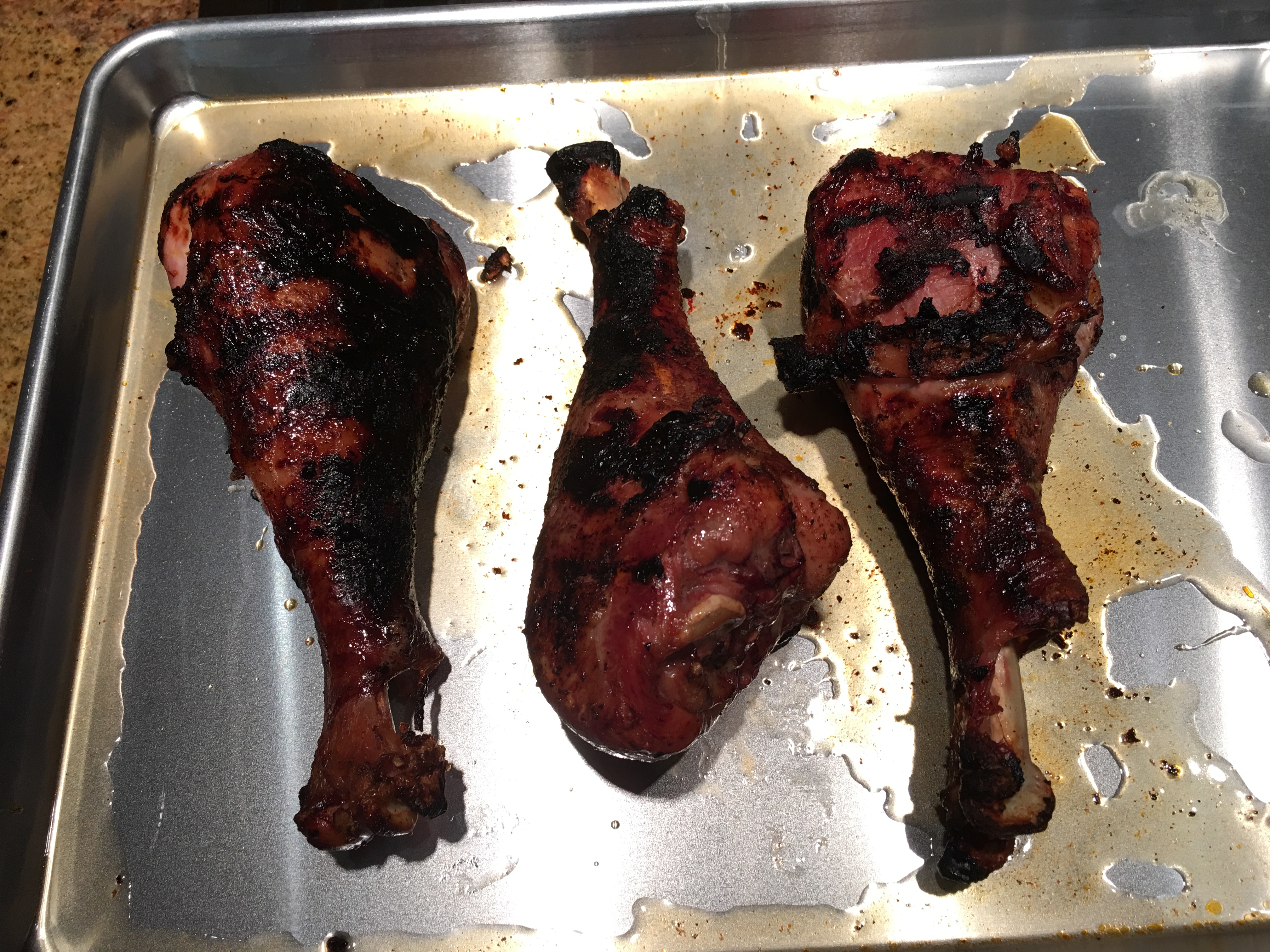
As Thanksgiving approaches, I’m getting pretty excited! It is by far my favorite holiday. It’s Sunday night, and I’ve done all of my shopping. I’m sure I will need to go back to the store one more time, but I’m ready. I’ll be dry brining two turkeys tomorrow night – that takes three days. I’m working Monday and Tuesday, then I pick my mom up at the airport on Tuesday night, and Thanksgiving officially begins.
But why not start a little early? I saw Turkey Legs on sale at the store, so I bought a package of three, and started dreaming about Turkey Legs, Renaissance Fairs, Disneyland, and the Arkansas State Fair. Caveman Pops! So good! I seasoned them with some of my Arkibu Rub last night. I fired up the the Big Green Egg around 4:00 in the afternoon.
Dawson and I played a few games of ping pong in the light mist. He’s getting better, but I can still take him. That was how it was with Ryan for a long time, now I can beat Ryan 2 out of 10 times if I’m lucky.
The legs went on the Egg at 5:00. I smoked them at 300 degrees (just the charcoal – no wood chips) until they hit an internal temp around 175 to 180. A little over an hour later, they were ready to go!
I took them inside, and glazed them with what I thought was a decent amount of honey, then put them on my hot gas grill, directly over flame. I turned them a few times, and took them off when they were good and charred! They looked Disneyland/Renaissance worthy!
I wrapped them up in foil, unwrapped them at dinner time, and Dawson and I dined like fortunate Cavemen tonight. Uggh! Next time, I’ll honey them up even more! I’ll upload the recipe soon.
Happy Thanksgiving everyone. It’s already started in our house!
Mike
We brought this beautiful Lentil and Spinach dish to Karen’s pot luck dinner last night!

What to bring to a pot luck when good cooks are involved is always a tough question. After fretting, we decided to go vegetarian and tried a new dish – Green Lentils with Wine-Glazed Vegetables, adapted from Deborah Madison’s, Vegetarian Cooking for Everyone.
It was a big hit, though (as usual) I made wayyyyy too much!
Happy Cooking!
– Mike
Great Dinner Last Night! – Pasta with Baked Tomato Sauce and Caesar Salad

I was Jill’s sous-chef last night, and I was happy to do it! And it was one of the best dinner’s I’ve had in a while.
We featured a new dish – a baked tomato sauce that our friend Laurie has been cooking for a while. It’s baked and it has lots of butter and garlic. What can go wrong with that?
Giving Parents the Tools to Succeed
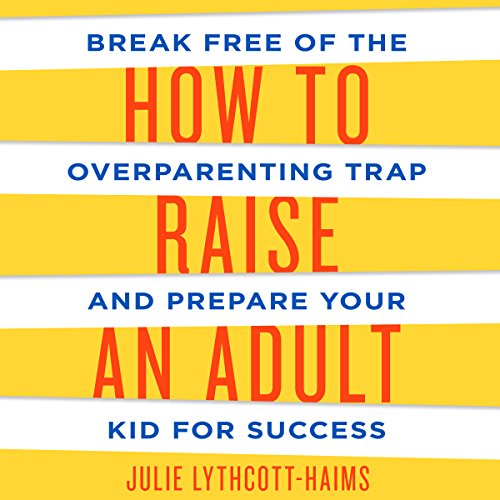
Twice a year, the superintendents and curriculum leaders from seven high-performing districts across the western United States meet to learn from each other and local experts. One of our themes has been how schools can help students develop into healthy, happy, thinking, and self-reliant adults ready to contribute to our society. We have worked with brain researchers, corporate leaders, and education researchers to help us develop policies and practices consistent with best practices and research.
On our most recent trip to Palo Alto, we heard from Stanford researchers coming at us from different angles on how to help students. Denise Pope as well as teachers in the Stanford Design School spoke about best instructional practices, while Julie Lythcott-Haims helped us to understand best parenting practices. I’m going to focus on parenting for this blog post.
Julie Lythcott-Haims, author of How to Raise an Adult; Break Free of the Overparenting Trap and Prepare Your Kids for Success (2015), has seen the deterioration of self-efficacy among students in one our nation’s most selective universities. While first-generation college students and students from less affluent homes continue to have high skills in the area of self-efficacy, those from more affluent homes do not. One of the primary reasons, says Lythcott-Haims, is that parents just do too much for their children, and they do not let their children do enough for themselves.
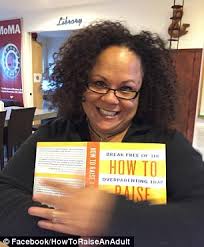
All of us in the Consortium believe this is a message worth spreading. We are talking in depth right now about the concept of self-efficacy – described by Lythcott-Haims as believing in your ability (not your parents) to complete tasks, attain goals, and manage challenging situations.
- Should avoid refereeing our child’s conflicts
- Should avoid chauffeuring our children. (Walking and biking are fantastic!) (I think this is a tough one)
- Should not bring a forgotten item to our child.
- Should never do our child’s homework.
- Should give our child chores that make the household better.
- Should not chart our child’s life. There is no such thing as “my child has to . . .”
- Have a wide mindset about colleges. The counseling department at New Trier HS urges, “College is a match to be made, not a prize to be won.”
- Listen to our kids. Really listen.
- Encourage our kids to have free time/play time/unstructured time
- Lets our children see us enjoying free time/play time/unstructured time
- Don’t stress self esteem for our child; emphasize self-efficacy.
- See if our children can experience “flow.”
- Encourage thinking at home
- Encourage deep and persistent thinking at home
- Let kids speak up for themselves
- Let our children experience mistakes, failures, and curve balls.
One of my favorite moments came while Lythcott-Haims was speaking to all of us in a very public room at Palo Alto High School. Students passing by stopped to listen, and they stayed because her message resonated with them. Several students asked if there was any way that Lythcott-Haims could speak with their parents, because they would love their parents to hear her advice. It was perfect.
Since I have returned from hearing her speak and subsequently reading her book, I have already changed a few things about how I communicate and interact with my 13-year old son. If he doesn’t like it now, he certainly will later on! That’s my story and I’m sticking to it. I’m happy to be continuously learning about how to be the best parent possible.
Reading: Screens or Paper?


One More Hill
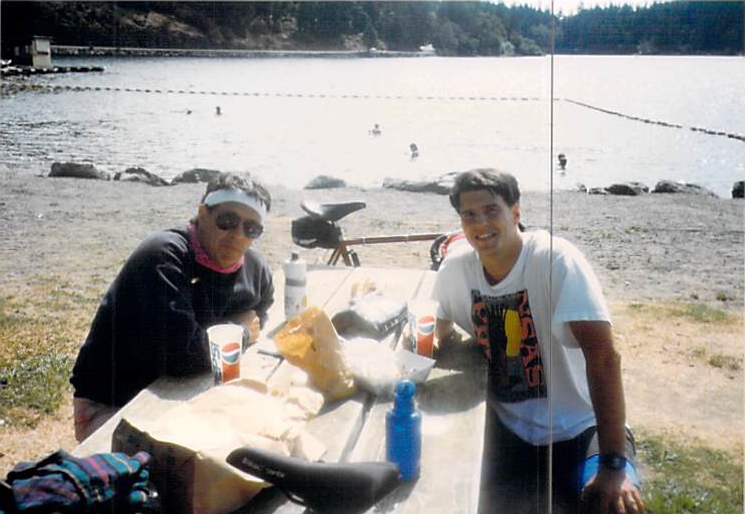
- I remember coming into a country store around lunch time looking for a sandwich. The store didn’t sell sandwiches, just groceries. But the owner opened up a loaf of bread and a package of bologna and a bottle of mustard, and charged us for the portion that she used. Pretty cool.
- Our family of six (four kids – ages 16 to 11) went biking for three weeks in Ireland, camping half the time and staying in B&Bs half the time. It was a lifetime experience that warrants its own set of stories.
- The last time I took a big trip with my Dad was about 20 years ago, when the two of us went biking in the San Juan Islands. It was a fantastic trip where we camped the entire time. Once again, my Dad was in better shape than I, but he dragged me along. That’s us below.









